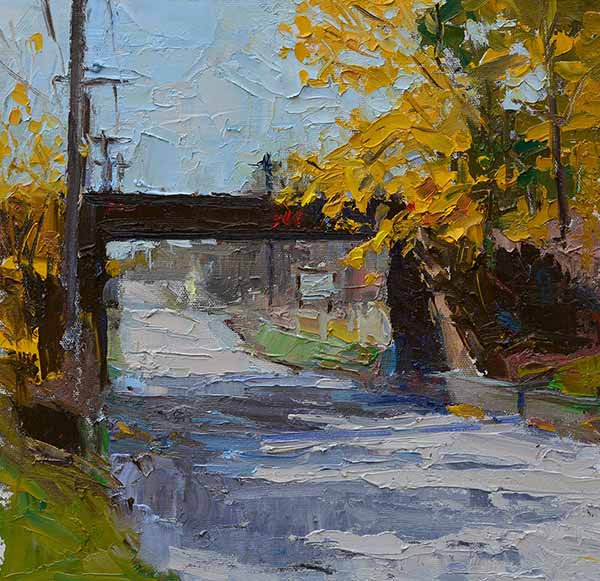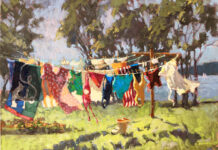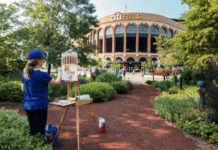Indiana artist Carol Strock Wasson found an abstract shape near her home that makes the spot her favorite place to paint.
Lead Image: “Late October Railroad Bridge,” by Carol Strock Wasson, oil, 12 x 12 in.
It’s just an old railroad bridge. Strock Wasson lives in Union City, Indiana, and there are likely many such overpasses all across the country. But when this artist sees the hulk of rusting metal, she sees a formidable design. The bridge adds a strong horizontal with a dark value in the scene. Strock Wasson pounces on that.
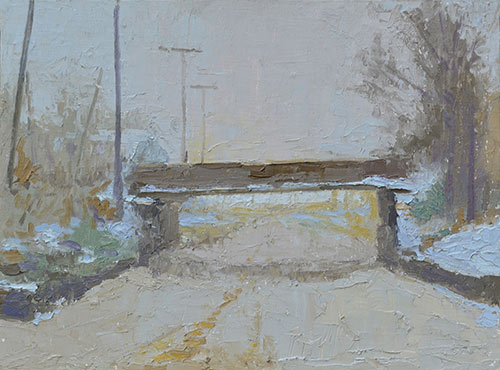
“That’s one of the reasons I’ve been attracted to the scene — I can see the abstract design that suggests a painting,” she says. “I’ve always been attracted to that horizontal element in a vertical design — it’s just a dark horizontal presence, with vertical trees on the side, and vertical telephone poles visible in the back, too. There is something about that, those horizontal and vertical elements clashing or complementing each other, that I really like.”
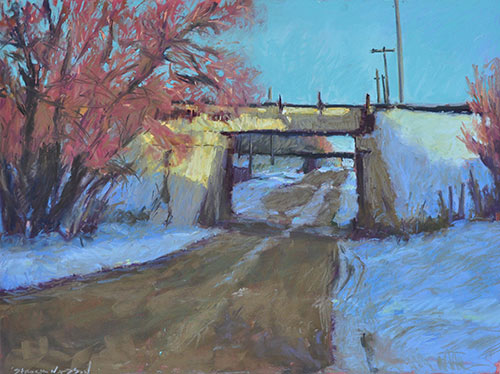
Strock Wasson is more interested in the design of a scene, in the abstract elements. “It’s more about the design than the objects,” says the artist. “That’s true with a lot of my work. I don’t want to be doing a painting, but rather an abstract design. Any artist can paint objects, but it’s the design that draws me.”
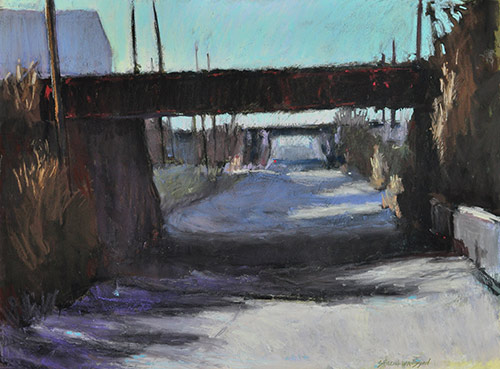
She mentions a favorite painting of hers by Mary Cassatt, “Woman With a Red Zinnia,” in which a dark bench contrasts strongly with the figure. “I liked that image when I was studying art, and that dark bench is what started me thinking about the bridge; I saw it as a way to explore what I saw in that Mary Cassatt painting.” Strock Wasson is also a fan of the work of George Inness, a tonalist more concerned with values and mood than objects, and Wolf Kahn, a colorist who pays more attention to accurate value than the precise saturation of color. “When I painted the railroad bridge in the snow at night I played down the drama of the value contrasts,” she says. “I kept the values very close and made it about the snow and the light effect. The bridge itself is a dark, rusty red, but I might add some violets to it sometimes, or put richer reds in it. You can turn it into any color you want as long as it’s that dark value. In the snow painting, I gave it a bluish cast. I love to exaggerate color and do it any time I have the opportunity to do so.”
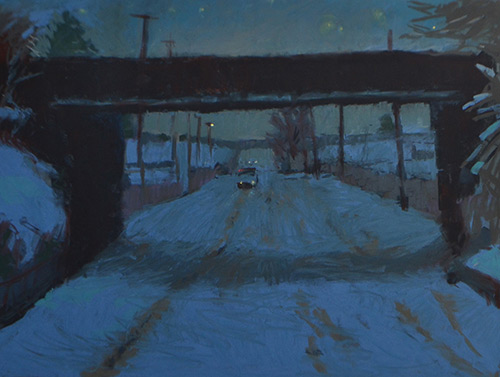
Strock Wasson says she likes to catch the bridge at all times of day and every season of the year. “It makes an excellent prop,” she says. “Union City used to be a very active railroad town, but it’s not really the railroad angle that interests me so much. I just like that dark horizontal.”
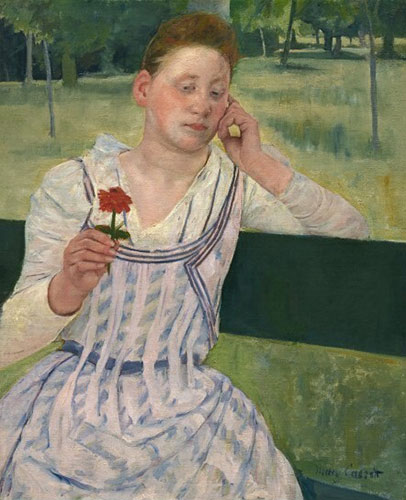
The artist sticks to a fairly simple split-primary palette, with phthalo acting as the cool blue. “Mix some ultramarine and some phthalo blue with white and it makes a very good blue for sky,” she says. The sky, the trees, the old railroad bridge, the change of seasons — Strock Wasson is fully engaged with her environment. “I get up and see the sunrise and turn around and see the sunset at the end of the day — so I’m very fortunate to live in a rural setting. We don’t get good phone service, but great views of sunrise and sunset!”

